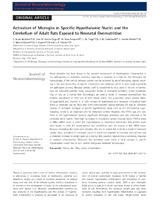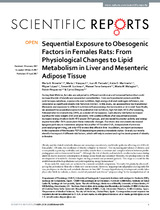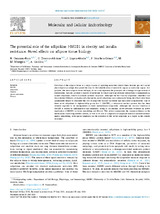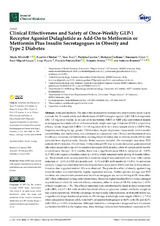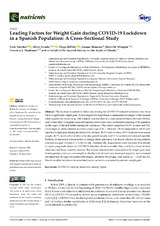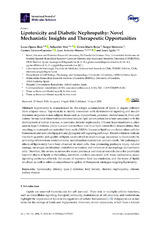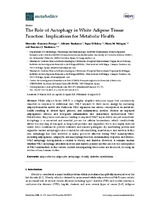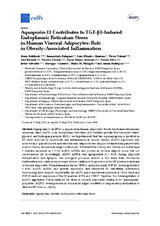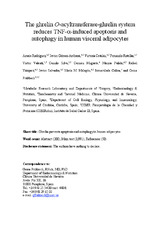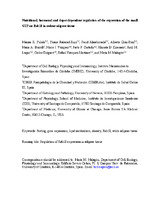Buscar
Mostrando ítems 1-10 de 11
Activation of microglia in specific hypothalamic nuclei and the cerebellum of adult rats exposed to neonatal overnutrition
(Blackwell Publishing, 2011)
Much attention has been drawn to the possible involvement of hypothalamic inflammation in the pathogenesis of metabolic disorders, especially in response to a high-fat diet. Microglia, the macrophages of the central nervous ...
Sequential Exposure to Obesogenic Factors in Females Rats: From Physiological Changes to Lipid Metabolism in Liver and Mesenteric Adipose Tissue
(Nature Research, 2017)
During their lifetime, females are subjected to different nutritional and hormonal factors that could increase the risk of obesity and associated comorbidities. From early postnatal periods until the postmenopausal phase, ...
The potential role of the adipokine HMGB1 in obesity and insulin resistance. Novel effects on adipose tissue biology
(Elsevier, 2021)
Discovery of the adipose tissue as a major source of signaling molecules almost three decades ago set a novel physiological paradigm that paved the way for the identification of metabolic organs as endocrine organs. ...
Clinical Effectiveness and Safety of Once-Weekly GLP-1 Receptor Agonist Dulaglutide as Add-On to Metformin or Metformin Plus Insulin Secretagogues in Obesity and Type 2 Diabetes
(MDPI, 2021)
Aims and methods: The aim of this monocentric retrospective observational study was to evaluate the 18-month safety and effectiveness of GLP-1 receptor agonist (GLP-1 RA) dulaglutide (DU) 1.5 mg/once weekly as an add-on ...
Leading Factors for Weight Gain during COVID-19 Lockdown in a Spanish Population: A Cross-Sectional Study
(MDPI, 2021)
The increase in sedentary behaviors during the COVID-19-induced lockdown may have led to a significant weight gain. To investigate this hypothesis, a representative sample of the Spanish adult population comprising 1000 ...
Lipotoxicity and Diabetic Nephropathy: Novel Mechanistic Insights and Therapeutic Opportunities
(MDPI, 2020)
Lipotoxicity is characterized by the ectopic accumulation of lipids in organs different from adipose tissue. Lipotoxicity is mainly associated with dysfunctional signaling and insulin resistance response in non-adipose ...
The Role of Autophagy in White Adipose Tissue Function: Implications for Metabolic Health
(MDPI, 2020)
White adipose tissue (WAT) is a highly adaptive endocrine organ that continuously remodels in response to nutritional cues. WAT expands to store excess energy by increasing adipocyte number and/or size. Failure in WAT ...
Aquaporin-11 Contributes to TGF-β1-Induced Endoplasmic Reticulum Stress in Human Visceral Adipocytes: Role in Obesity-Associated Inflammation
(MDPI, 2020)
Aquaporin-11 (AQP11) is expressed in human adipocytes, but its functional role remains unknown. Since AQP11 is an endoplasmic reticulum (ER)-resident protein that transports water, glycerol, and hydrogen peroxide (H2O2), ...
The ghrelin O-acyltransferase–ghrelin system reduces TNF-α-induced apoptosis and autophagy in human visceral adipocytes
(SpringerLink, 2012)
Aims/hypothesis
Proinflammatory and proapoptotic cytokines such as TNF-α are upregulated in human obesity. We evaluated the association between ghrelin isoforms (acylated and desacyl ghrelin) and TNF-α in obesity and ...
Nutritional, hormonal, and depot-dependent regulation of the expression of the small GTPase Rab18 in rodent adipose tissue
(Society for Endocrinology, 2013)
There is increasing evidence that proteins associated with lipid droplets (LDs) play a key role in the coordination of lipid storage and mobilization in adipocytes. The small GTPase, RAB18, has been recently identified as ...

